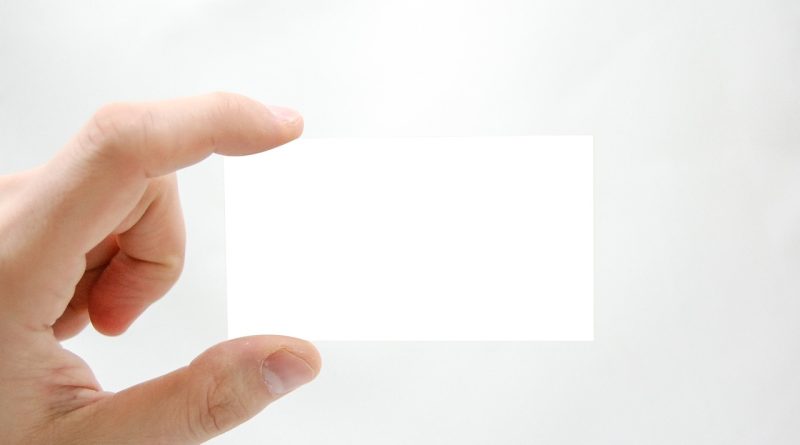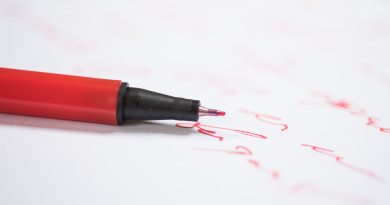How To Design The Perfect Business Card: 10 Easy Tips You Need to Know
The humble business card, a steadfast tool for most business owners, has proven its worth over the years. Despite the rise of digital marketing, this pocket-sized piece of paper continues to hold its ground, serving multiple purposes with consistent success. Its enduring value, contrary to popular belief, remains strong in the ever-evolving marketing space.
In fact, over half of business owners interviewed for one survey said they found business cards to be a critical component of their success, and 68% said that business cards were useful for face-to-face meetings (source: MOO).
Even in the digital age, the practicality of a business card remains unmatched. For those who prefer a tangible, easy-to-digest format for sharing information, a business card is a handy tool. Its value is not just sentimental but also practical, making it a relevant choice for business owners, even in today’s digital-dominated world. This enduring practicality serves as a reassuring constant in the ever-changing landscape of marketing.
However, designing the perfect business card isn’t as simple as you might think it is. If you want your card to hit the mark and not end up as a glorified coaster or, worse, in the bin without even a cursory glance, these tips can be valuable to help you create the perfect business card.

Know Your Audience
For a business card to be effective, it’s crucial to understand your audience and the type of messaging they will respond to. It’s not useful to come up with a fun, quirky, out-of-the-box design if your audience won’t be receptive to it. Before you start designing, it’s essential to understand the type of people you will be handing your card to, so you can create a design that resonates with them. This understanding empowers you to make design choices that will truly connect with your audience.
Choose the Right Size
Standard business cards need to be small, or they might as well be a leaflet, right? Traditional cards come in a 3×2.5 inch rectangle size; however, this isn’t a rule, more a standard. You need your card to be small so it doesn’t take up too much space. However, there is nothing stopping you from pushing the boundaries slightly and increasing the size slightly, changing the shape or adding to your basic shape and size to make it stand out. However, straying too far from this size can be a waste of time because your business arc ideally needs to fit into a pocket easily, and ageing too big removes this option.
Easy To Read Fonts
Your business card will contain bite-sized information. People want to be able to see the information clearly and at a glance, and deciphering what it’s trying to say will not really give you this clarity. Avoid overcomplicated fonts, sizing your information too small, and basically trying to reinvent the wheel. Times New Roman and Ariel are popular choices for business cards, as both fonts are easy to read fast.
Use Your Colour Scheme
Many people prefer to use a plain white business card, and while there is nothing wrong with that, being able to incorporate your branding colours can elevate the design and tie it to your business for more impact. It doesn’t need to be used in an obvious way, but weaving brand colours in some design elements can help you to improve the design and create a more distinctive business card that catches people’s eyes, especially if you’re handing them out at an event where people are likely to accumulate multiple business cards.
Your Logo Is A Must
You have no doubt seen some amazingly creative and viral business card designs, and while you want to think this will happen to your business card, what’s more, important is that it is easily linked back to your business, so you need to incorporate your logo so this can happen.
Whether you add it as a graphic or design your business card in the shape of the logo, for example, a circle card or diamond shape, if your logo is the same shape, you need to ensure that your logo is on the card and easily recognizable.
Don’t Forget Contact Details
People aren’t mind readers, nor do they want to scramble to find your contact details after meeting you. Your business card, while only small, needs to contain vital information on how you can be contacted. It requires your name, company name, email, address, phone number, and URL. Adding in your social media handles can be helpful. However, remember it needs to be clear and easy to read and not overloaded, so finding a balance between the right level of details and too much is something you need to experiment with so you can find the perfect balance for your card and design, instilling confidence in your card’s effectiveness.
High Quality
Your business cards need to be able to withstand being touched and held, maybe even stored, and usually not in ideal circumstances, i.e., shoved into pockets or piled up on a desk, for example. As such, you need to ensure that your card is made of only high-quality materials to help it withstand being handed out and then used by the recipient. A poor-quality card will only reflect badly on you and won’t exactly give a good impression. By choosing high-quality materials, you can instil confidence in your card’s durability and make a good first impression.
Always run your ideas through multiple people prior to printing and then use a quality printing service to ensure that your business card stands out for all the right reasons and makes a good first impression.
Pay Attention To Design Rules
While you can push the boundaries of what your business card design can do and the creativeness of your ideas, there are some rules you should adhere to to create a more professional-looking card and avoid making major mistakes.
These tips include;
- Keeping the main copy at least 5 mm from the edge of the card
- Use the CMYK colour model: cyan, magenta, yellow and black
- 300 dpi for best image quality.
Reflect Your Brand
It’s really important for you to try to ensure that your business card reflects your brand. Regardless of your chosen design, it needs to tie back into you and your business and be a part of your overall image and brand culture. Think carefully about what image you want your brand to establish in people’s minds and how you want to be thought of by others. They incorporate these values into the design and information you use on your business card.
Proofread
Read it back to yourself prior to printing and then re-read it again, running it by others if need be. The last thing you want is to miss any important details or make any mistakes unintentionally—unless that is an intentional part of your well-thought-out business card design! Proofreading prior to printing is vital to ensure everything is correct, the design works, and you can be confident everything is as it needs to be.
Designing your business card needs to be done with thought and care. It is a valuable way to help you promote your business, make important contacts, and build relationships. While only small, the power of a business card is mighty, and these tips can help you ensure you produce the perfect business card. Pay attention to the details, don’t overload the card with information, use your brand colour, logo, and personality to put together a perfect business card, and most importantly, proofread it!




